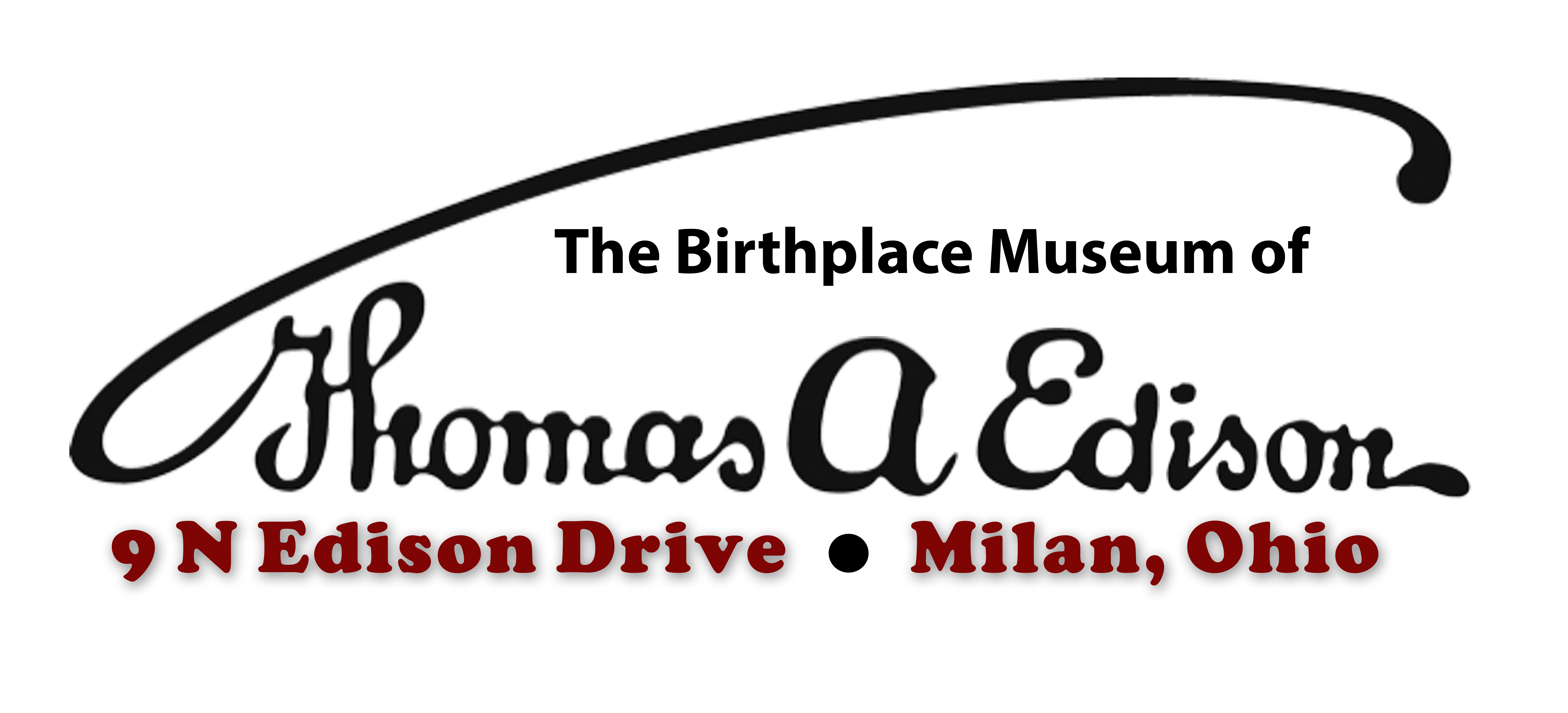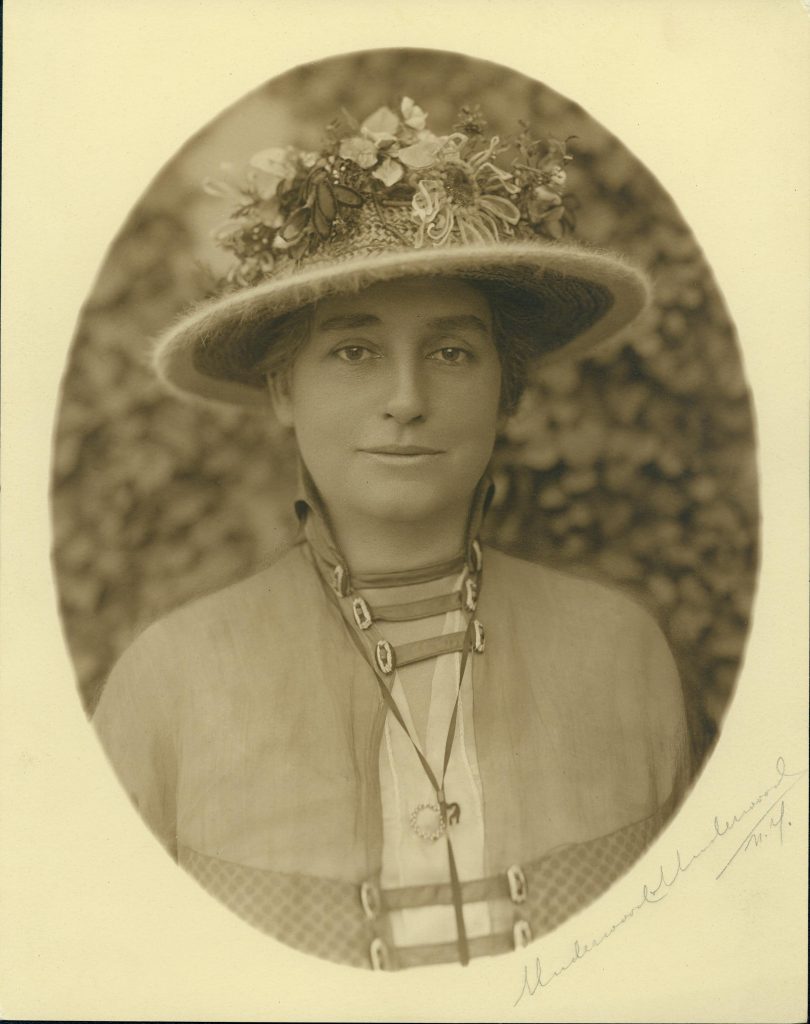Mina Miller Edison, second wife of Thomas Edison, and her legacy of loving support and intellectual strength
Mina Miller Edison (1865-1947) was the second wife of Thomas Edison. The couple was married in 1886, two years after the death of Edison’s first wife, Mary Stillwell Edison, in 1884. Mina was the daughter of another inventor, Lewis Miller of Akron, OH, and was beautiful, poised, and cultured. She was also 20 years younger than Edison. By the time they were married, when Mina was 19, Edison was well-known, and his businesses were thriving; he bought her a 23-room mansion, “Glenmont” in West Orange, NJ as a wedding gift.
Mina had to take on, in addition to her new husband, an instant family of 3 children: Marion, Thomas Jr. and William. Marion, the oldest, at 12, was just 7 years younger than her new mother, which made Mina’s job of raising them much more challenging. She and Edison would have 3 more children together – Madeleine, Charles, and Theodore.
It was to her benefit that Mina had been brought up in a large and intellectually active household with an inventor for a father, as she had to take on the management of her inventor husband’s life, his fame, and a daunting role as what she later called a ”domestic engineer.” Edison’s busy schedule, long hours away from her and the children in his labs and preoccupation with inventions left her to learn to manage her household mostly on her own. However, she fiercely protected her husband’s privacy, and her deft management of his social calendar made her an important asset to his business.
Mina entertained many famous guests at her home: Presidents Hoover and Wilson; the kings of Sweden and Siam; environmentalist John Burroughs and educator Maria Montessori; General Pershing; Helen Keller, and industrialists Henry Ford, Harvey Firestone, and George Eastman. Orville Wright and Charles Lindberg represented the coming age of flight, and musical artists that Edison had recorded on his phonograph records also visited. With all the demands of social entertaining, Mina still managed to bring up her children. And, too, she carved out a meaningful life of her own.

With John Burrough’s influence, she became a powerful force in the conservation movement, seeking to preserve wild areas in the same spirit that helped establish the national park system. She was also a bird watcher and horticulturalist, transforming Glenmont and planting trees, shrubs, and plants from all over the world.
If that wasn’t enough, Mina also worked on social, educational, religious, and common causes, creating a solid reputation for meaningful involvement in her community. Her work in education was a voice for classic liberal education that equipped children for participating as adults in the democracy. She studied foreign cultures, and her love of all experiences was connected to her participation at an educational retreat-resort in New York State on Lake Chautauqua. The Chatauqua Institute was founded by her father and a Methodist Bishop, John H. Vincent, and became an important adult social and educational movement that continues today.
She was a loving partner to her husband and well understood both his fame and the impact that he had in the world. Edison affectionately called her “Darling Billie” and she called him “Dearie.” Edison shared many of his inventing ideas with Mina and at times brought her into the lab. One time she had carefully written in notebooks his records of the experimenting he did to increase the life of electric lamps. She also concerned herself with making her husband’s grueling work hours more tolerable. Edison had a habit of taking short naps at the lab, usually on various tables. She had a bed brought in for him to nap more comfortably. She edged his very large silk handkerchiefs that he used every day but inevitably lost, so she ended up sewing them to the waist of his pants.

After Edison died in 1931, Mina continued to pursue her religious, educational, and civic interests. She and her daughter Madeleine wanted to preserve the humble home in Milan, Ohio, where Edison was born and lived for seven years. They envisioned a museum to be an inspiration for everyone, but especially to be an inspiration for youth. On February 11, 1947, the one hundredth anniversary of Edison’s birth, Madeleine presided over the opening of the Edison Birthplace as a museum. Mina, sadly, could not be there. She was too frail to attend and died on August 24, 1947. As we look toward the future of the Birthplace, we are reminded that thoughtful donors and supporters of the birthplace might consider a larger donation this year or a higher level of membership in honor of the seventy-fifth anniversary of her death in 2022.
Her legacy of loving support and intellectual strength is also continued by the Mina Edison Society of Florida South Western State College where professionals provide leadership, mentoring, and scholarships, believing in the boundless potential of young people, and where her contributions to the community were note-worthy.

